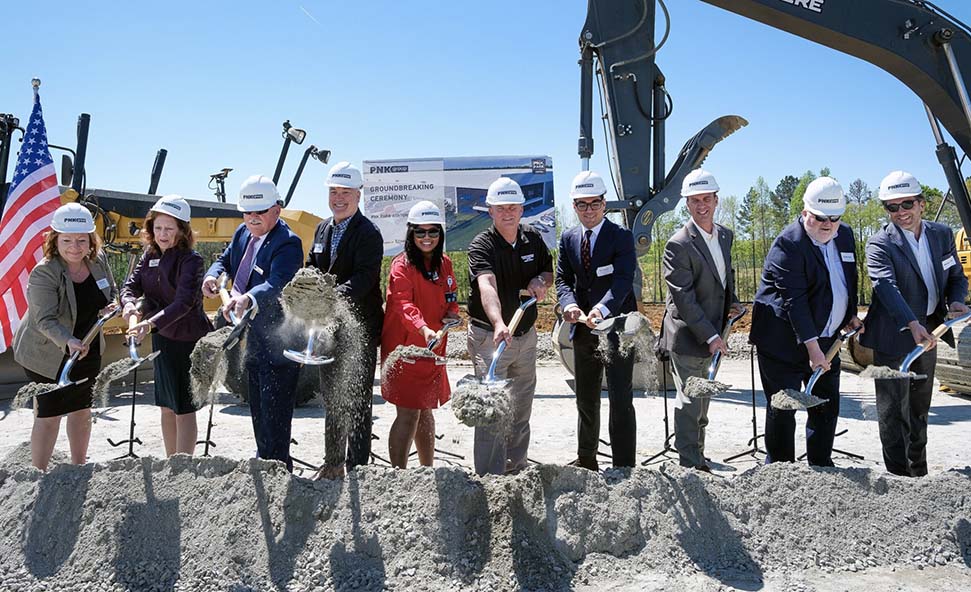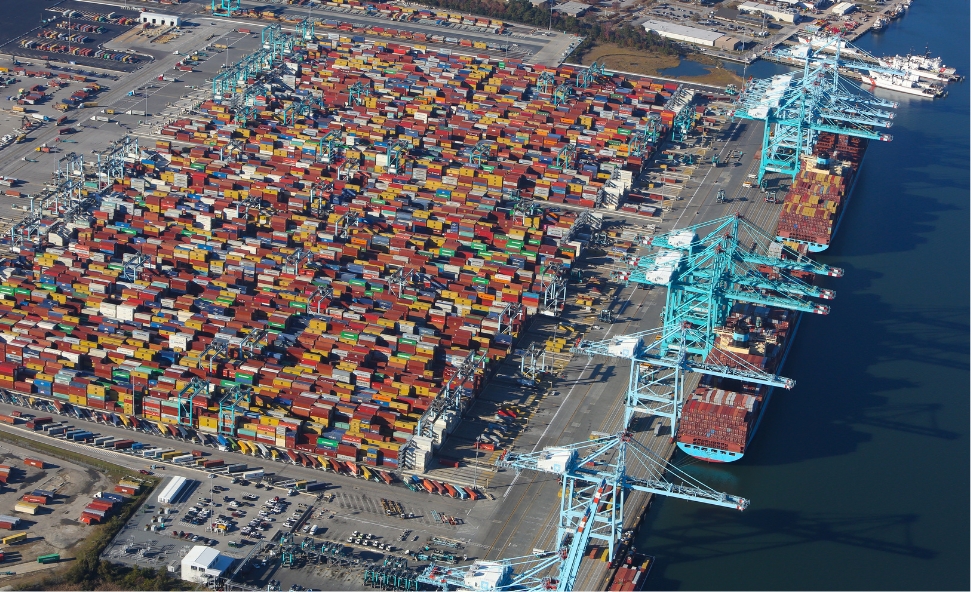
News
Blog | 4 min read
April 17, 2024

In a groundbreaking achievement, The Port of Virginia announced it has completed its clean energy goals for all terminals eight years ahead of schedule. The port is now the first major U.S. East Coast port to power its entire operation with 100 percent clean electricity, accelerating its goal of becoming carbon neutral by 2040.
This milestone is an important step in the port’s commitment to sustainability, helping to offset its carbon footprint by reducing carbon emissions by 45 percent per container. The port, known as America’s Most Modern Gateway, now operates a fleet of all electronic equipment, including 116 electric stacking cranes, four electric rail cranes and 27 electric ship-to-shore cranes.
The Port of Virginia is comprised of six terminals, serving as a vital gateway for trade and commerce. Travel about 95 miles up the James River from the port and you will find the Richmond Marine Terminal, a 121-acre operation able to handle up to 60,000 twenty-foot equivalent units (TEUs). The terminal has more than 300,100 sq.ft. of covered warehouse space, a 1,570-foot-long wharf and has access to I-95, with close proximity to I-64 and I-85. The terminal also has rail service on an as-needed basis, enhancing its logistical capabilities.
The Port of Virginia and Richmond Marine Terminal stand out not only for their commitment to sustainability but also for efficiency. When consumer demands increase, ports are often overwhelmed with a surge of goods. Fortunately, The Port of Virginia and Richmond Marine Terminal, integral to both local and state economies, can navigate surges without challenges.
The Port of Virginia has consistently proven its ability to manage record volumes of imports without congestion issues. While numerous ports along the East and West coasts dealt with an overwhelming amount of goods during the pandemic, The Port of Virginia managed record volumes effortlessly with no congestion issues. This achievement stems from substantial investments made in recent years toward cutting-edge infrastructure, technology, and equipment, fostering heightened productivity, efficiency, and long-term competitiveness.
Post-pandemic, the port is still prioritizing increased productivity and proficiency with no congestion issues. As a part of the extensive $1.4 billion Gateway Investment Program, $3 million is being invested at the Richmond Marine Terminal to expand capacity and install technology infrastructure. These advancements will expedite processing for trucks entering or leaving the facility, further elevating its operational efficacy.
Upon arrival at the Richmond Marine Terminal, import containers move across the terminal and begin the journey to the final destination, amplifying the region’s integral role in the movement of goods. Thanks to Greater Richmond’s strategic mid-Atlantic location, the region is a growing transportation and logistics hub. Successful supply chain and logistics companies have established facilities providing materials handling, warehousing, packing and transportation services. This strategic positioning attracts a network of growing companies essential to the seamless flow of goods across industries.
For example, many companies operate within the local Deepwater Industrial Park, located just 2.2 miles from the Richmond Marine Terminal. The park has more than 1.5 million sq.ft. of industrial space with the necessary electrical substations and utilities required to meet the needs of a full range of businesses.
The Richmond Marine Terminal has the quickest access of any port to I-95 and its location in Greater Richmond enables delivery drivers to reach 45 percent of the U.S. population within a day’s drive. This supports the region’s supply chain industry, employing over 53,000 workers and fostering a robust and expanding workforce that is beneficial to businesses. Noteworthy companies, such as Sapporo, Republic National, Church & Dwight, Weidmuller, SanMar, Plenty and the LEGO Group leverage Greater Richmond’s prime location to enhance their operations and solidify their industry presence. The unparalleled port access isn’t just an advantage, it is a cornerstone for success.
“VIP (Virginia Inland Port) and RMT are critical to our overall efficiency and our ability to maintain fluidity at primary container terminals in the Norfolk Harbor. Because of their strategic locations along important inland cargo corridors, we are able to move cargo closer to its end user, in terms of imports, and exporters can position their containers at these central collection points for loading onto barge and rail.” Stephen A. EdwardsCEO and Executive Director, Virginia Port Authority

With Virginia’s recognition as the leading state for business climate, there has been an unprecedented surge in demand for port-oriented economic growth and site development in the region. According to the port’s FY 2022 economic report, there have been 79 corporate announcements pledging investments exceeding $3.9 billion, with plans to establish over 16 million sq.ft. of manufacturing and distribution space since 2020. These initiatives will generate over 11,000 new jobs throughout the state.
The Port of Virginia and the Richmond Marine Terminal have not only achieved remarkable milestones in clean energy and sustainability but have demonstrated exceptional resilience and productivity. Greater Richmond’s proximity to the ports continues to attract notable companies to the region, fostering a surge of job creation and economic growth.
Learn more about logistics and e-commerce in the region here.